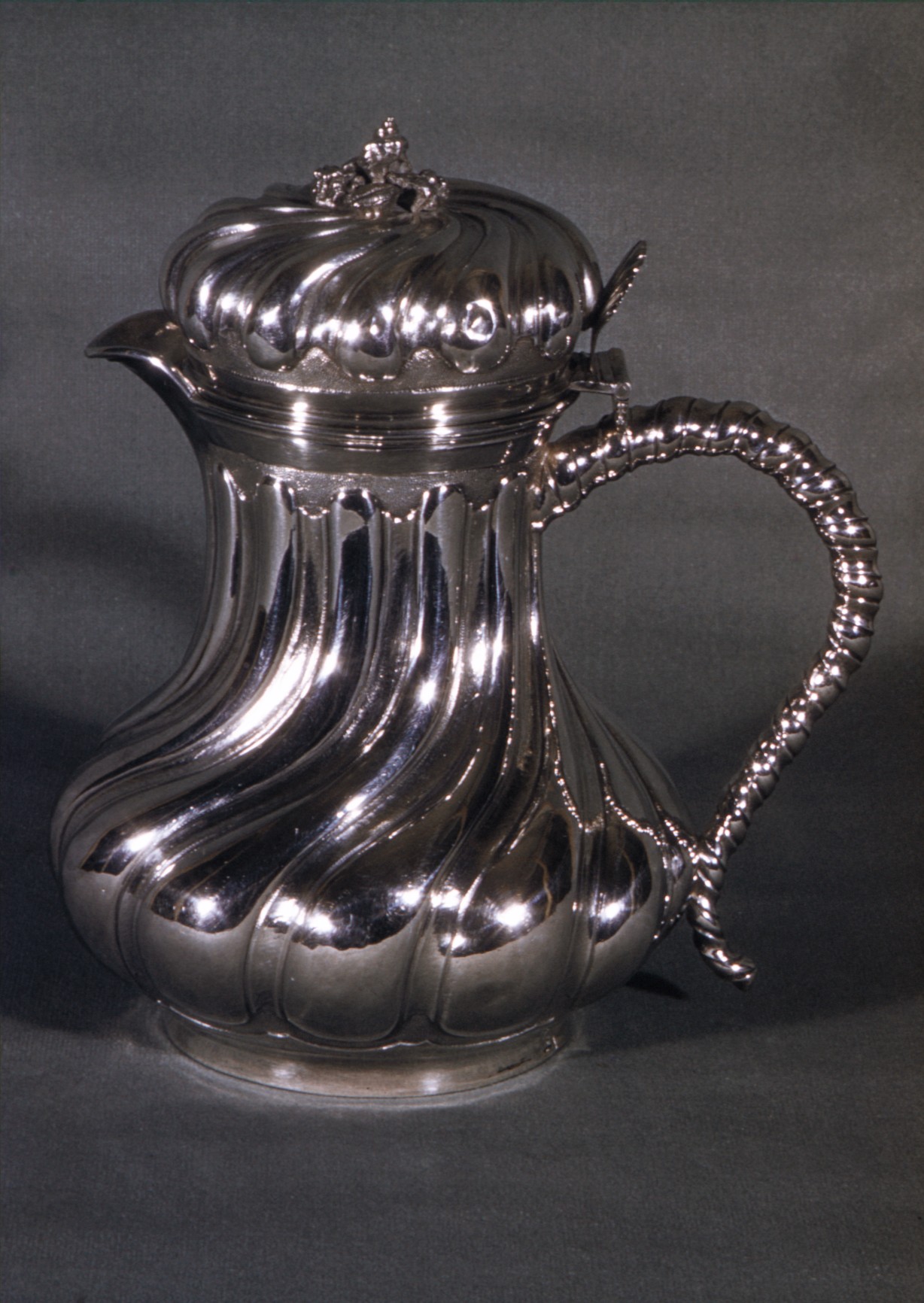Coffeepot
Initially taken as a medicinal drink, the reception at the French court of Suleyman Aga Mustafa Raca, the envoy of the Ottoman Sultan Mehmet IV in 1669, made coffee drinking fashionable in France. Quickly becoming popular at all levels of society, the beverage was enjoyed in salons and coffee-houses. Coffee was brewed with finely powdered grounds in the Turkish manner and served from the same vessel. In contrast with the teapot, the spout on the coffee-pot, rising from the base of the neck of the vessel, was placed as high as possible, so that the coffee-grounds could settle and would not be poured into the cups.
The more commonly found type of coffeepot has a pear-shaped body mounted on three feet, a flattened lid, a short spout, and a wooden handle, sometimes placed at a straight angle to the spout or directly opposite it. A three-legged pot could accommodate a burner placed between the feet to keep the beverage warm.
As seen in this example by the Paris silversmith Sébastien Igonet, a different type of coffeepot was also known. Referred to as a Marabout or a Coquemar, this kind of pot was considerably smaller in size, had a bulbous body and a flat short base which would have been placed directly on a burner. Made in 1738–1739, this Marabout coffeepot with its unusual rope-twisted silver handle shows the Rococo style in its swirling lines of the body and lid and the vegetal knob on top.
Daughter of one of the founders of the Weyerhaeuser Timber Company, Catherine D. Wentworth (1865–1948) was an art student and painter who lived in France for thirty years.She became one of the most important American collectors of eighteenth-century French silver and on her death in 1948 bequeathed part of her significant collection of silver, gold boxes, French furniture, and textiles to the Metropolitan Museum. The collection is particularly strong in domestic silver as illustrated by this coffeepot.
Due to rights restrictions, this image cannot be enlarged, viewed at full screen, or downloaded.
This artwork is meant to be viewed from right to left. Scroll left to view more.



